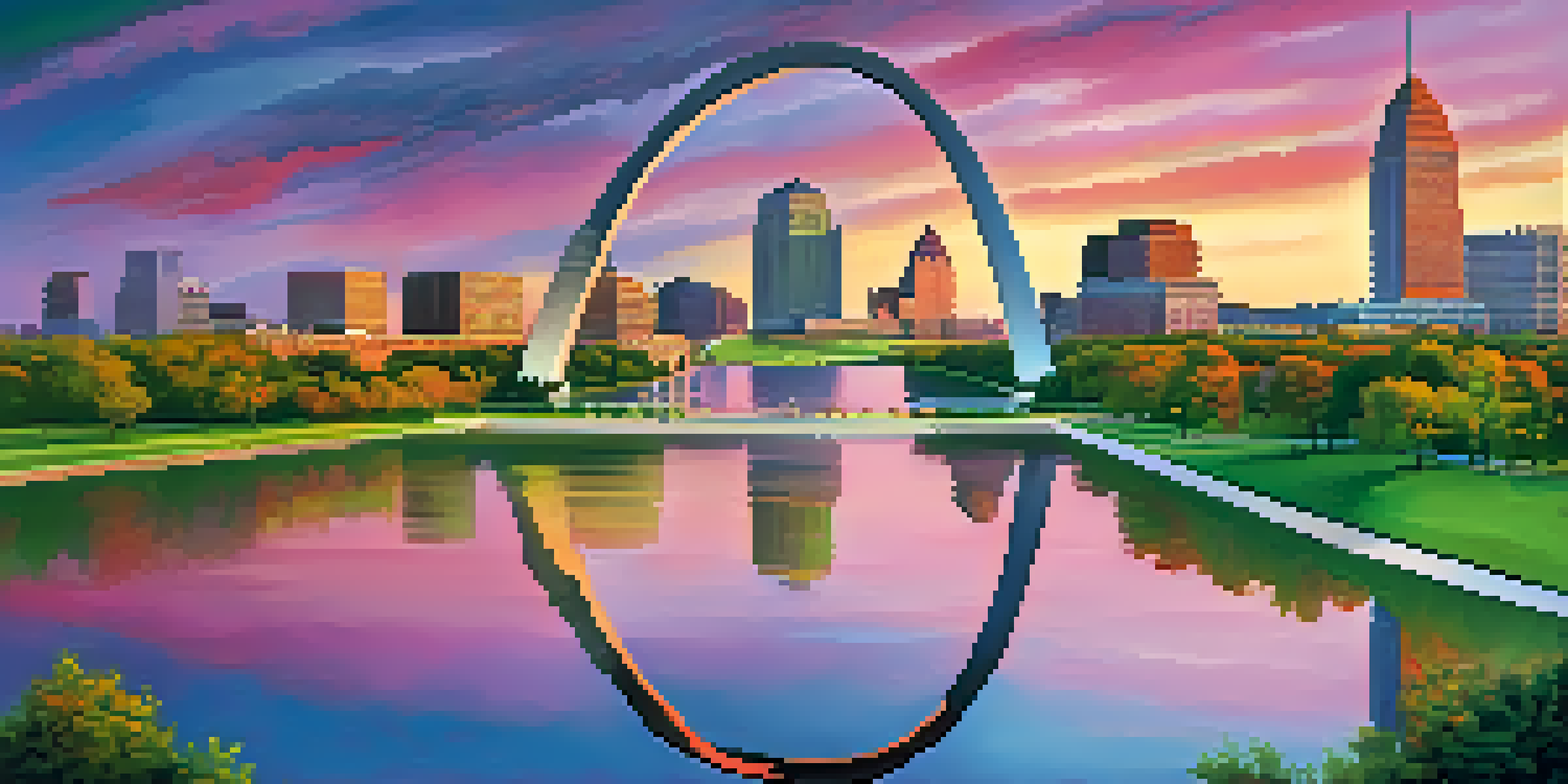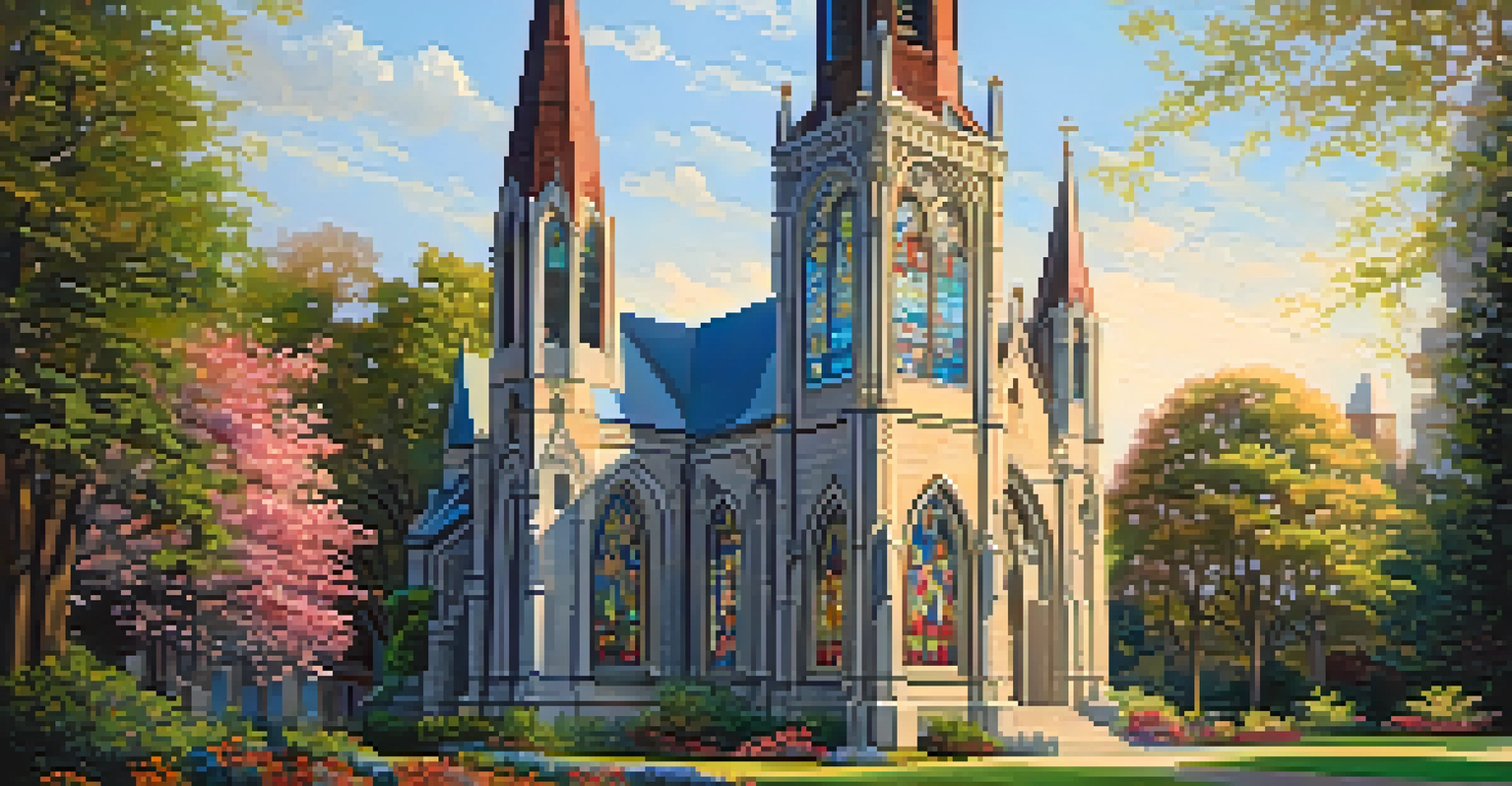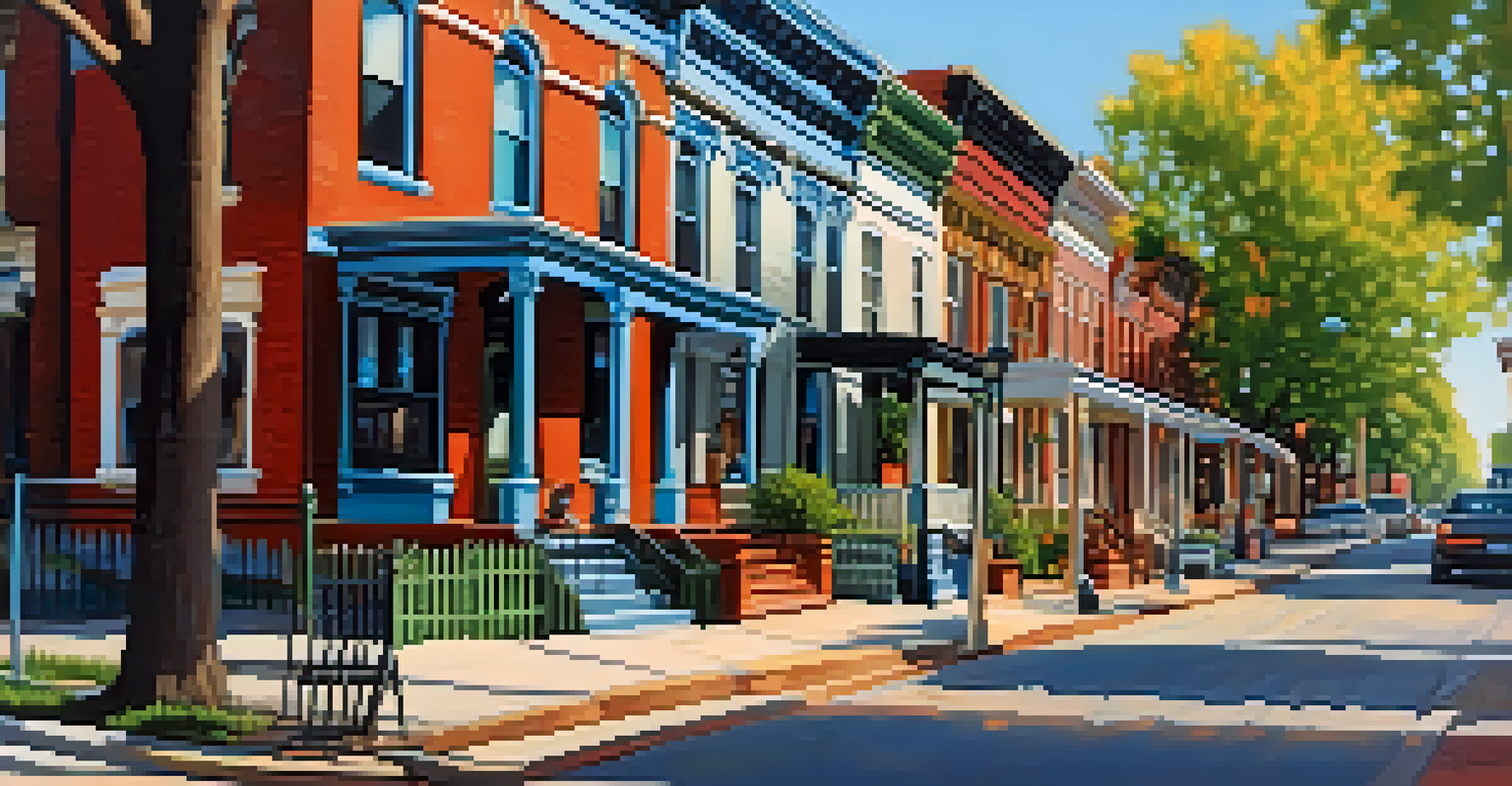The Role of Architecture in St. Louis Urban Development

The Historical Context of St. Louis Architecture
St. Louis boasts a rich architectural history that reflects its evolution over centuries. From the iconic Gateway Arch to historic neighborhoods like Lafayette Square, the city's buildings tell stories of the past. These structures not only showcase various architectural styles but also symbolize the spirit of the communities that built them.
Architecture is the art of how to waste space.
Understanding this historical context is essential to appreciate how architecture has influenced urban development. For instance, the French Colonial influence is evident in many older buildings, while the rise of modernism brought forth skyscrapers that redefined the skyline. Each era leaves its mark, creating a tapestry of design that continues to shape the city.
As new developments arise, they often draw inspiration from these historical elements, blending old and new. This interplay between history and innovation is what makes St. Louis's architecture so unique, providing a sense of continuity while also paving the way for future growth.
Key Architectural Styles Influencing Urban Spaces
St. Louis is home to a diverse array of architectural styles, each contributing to the city’s identity. From Gothic Revival churches to Art Deco skyscrapers, the variety showcases the creativity of architects throughout history. These styles not only impact aesthetics but also play a role in urban planning and community layout.

For example, the Victorian homes in neighborhoods like Soulard create a charming, pedestrian-friendly environment. In contrast, the sleek lines of contemporary buildings often signify a shift towards a more modern urban landscape, attracting businesses and residents alike. The blending of these styles can enhance the urban experience, making spaces more inviting.
St. Louis Architecture Reflects History
The architectural styles in St. Louis showcase the city's rich history and community spirit, blending old and new elements.
Moreover, architecture can influence social dynamics within these spaces. Thoughtfully designed public buildings and parks can foster community interaction, while poorly designed areas may lead to isolation. Thus, the architectural style chosen for any given project can have profound implications for the urban fabric of St. Louis.
The Gateway Arch: A Symbol of Transformation
The Gateway Arch stands as a monumental symbol of St. Louis, representing both the city’s history and its aspirations. Designed by architect Eero Saarinen, this 630-foot structure serves as a gateway to the West, commemorating the spirit of exploration. Its sleek, modern design contrasts with the historic buildings surrounding it, showcasing the evolution of architectural thought.
The best way to predict the future is to design it.
Beyond its aesthetic appeal, the Arch has spurred significant urban development in the surrounding area. The revitalization of the riverfront and nearby parks has transformed what was once an underutilized space into a bustling hub for residents and tourists alike. This kind of thoughtful integration of architecture into urban planning can enhance the quality of life in a city.
Moreover, the Gateway Arch has become a focal point for various community events and activities, reinforcing its role as more than just a monument. It serves as a gathering place, fostering a sense of community and pride among St. Louis residents. This transformation highlights how architecture can shape not just the skyline, but also the social landscape.
Urban Renewal and Modern Architectural Trends
Urban renewal projects in St. Louis have embraced modern architectural trends to revitalize neighborhoods. These initiatives often focus on repurposing old buildings while integrating contemporary design, creating a harmonious blend of the old and the new. This approach not only preserves history but also meets the needs of modern urban life.
For instance, the renovation of the historic Cupples Station warehouse district into a mixed-use development showcases how architecture can breathe new life into forgotten spaces. By retaining the original character of the buildings and adding modern amenities, developers create attractive environments for businesses and residents alike. This strategy not only boosts the local economy but also enhances community engagement.
Public Spaces Enhance Community Life
Well-designed public spaces in St. Louis foster community interaction and contribute to economic development.
Additionally, sustainable architecture is becoming increasingly important in urban development. Incorporating green building practices and energy-efficient designs helps to reduce the environmental impact of new constructions. As St. Louis continues to grow, these modern trends will play a crucial role in shaping a sustainable urban future.
The Role of Public Spaces in Urban Design
Public spaces are vital components of urban design, providing areas for community gathering and recreational activities. In St. Louis, parks like Forest Park and Citygarden serve as green oases amidst the urban landscape, offering citizens a place to relax and socialize. The design and accessibility of these spaces can greatly influence the quality of life in the city.
Architects and urban planners are increasingly recognizing the importance of creating inclusive public spaces that cater to diverse populations. Thoughtful design can transform underutilized areas into vibrant hubs that encourage interaction and community engagement. For example, the revitalization of the Delmar Loop has created an inviting atmosphere, attracting locals and visitors alike.
Furthermore, well-designed public spaces can contribute to economic development. They draw foot traffic, support local businesses, and can even increase property values in surrounding areas. Thus, incorporating public spaces into urban planning is not just about aesthetics; it’s about fostering a thriving, interconnected community.
The Impact of Architecture on Community Identity
Architecture plays a crucial role in shaping community identity, creating a sense of place and belonging. In St. Louis, neighborhoods each have their own architectural character, contributing to a unique cultural tapestry. For residents, these distinctive buildings and styles foster pride and connection to their local history.
For example, the historic homes in the Central West End reflect the area’s affluent past, while the vibrant murals and contemporary designs in the Grove illustrate the neighborhood's artistic evolution. This diversity in architecture allows residents to engage with their heritage and express their identity through the built environment.
Future Architecture Emphasizes Sustainability
Innovative architectural solutions focused on sustainability and smart technology will shape the future of St. Louis.
Moreover, community involvement in architectural projects can further enhance this sense of identity. When residents participate in the design process, the resulting spaces often reflect their values and needs. This collaborative approach can strengthen community ties and ensure that new developments resonate with the people who live there.
Future Directions in St. Louis Architecture
Looking ahead, the future of architecture in St. Louis is poised for exciting developments. As the city navigates challenges like population changes and environmental concerns, innovative architectural solutions will be essential. Embracing technology and sustainable practices can help create a resilient urban environment that meets the needs of future generations.
Emerging trends suggest a growing emphasis on smart city initiatives, where technology enhances urban living. Integrating smart systems into architecture can improve efficiency in energy use, transportation, and public services. St. Louis can lead the way by adopting these advances, ensuring that its infrastructure evolves alongside its residents.

Additionally, fostering collaboration between architects, city planners, and community members will be vital. By working together, stakeholders can create spaces that are not only functional but also reflective of the city’s rich heritage and aspirations. This collaborative spirit will help shape a vibrant, inclusive future for St. Louis.